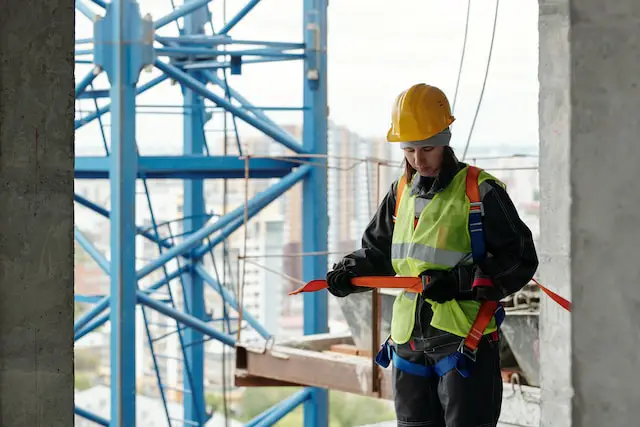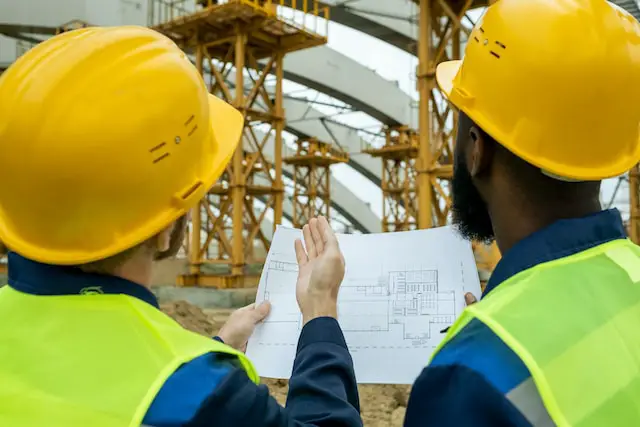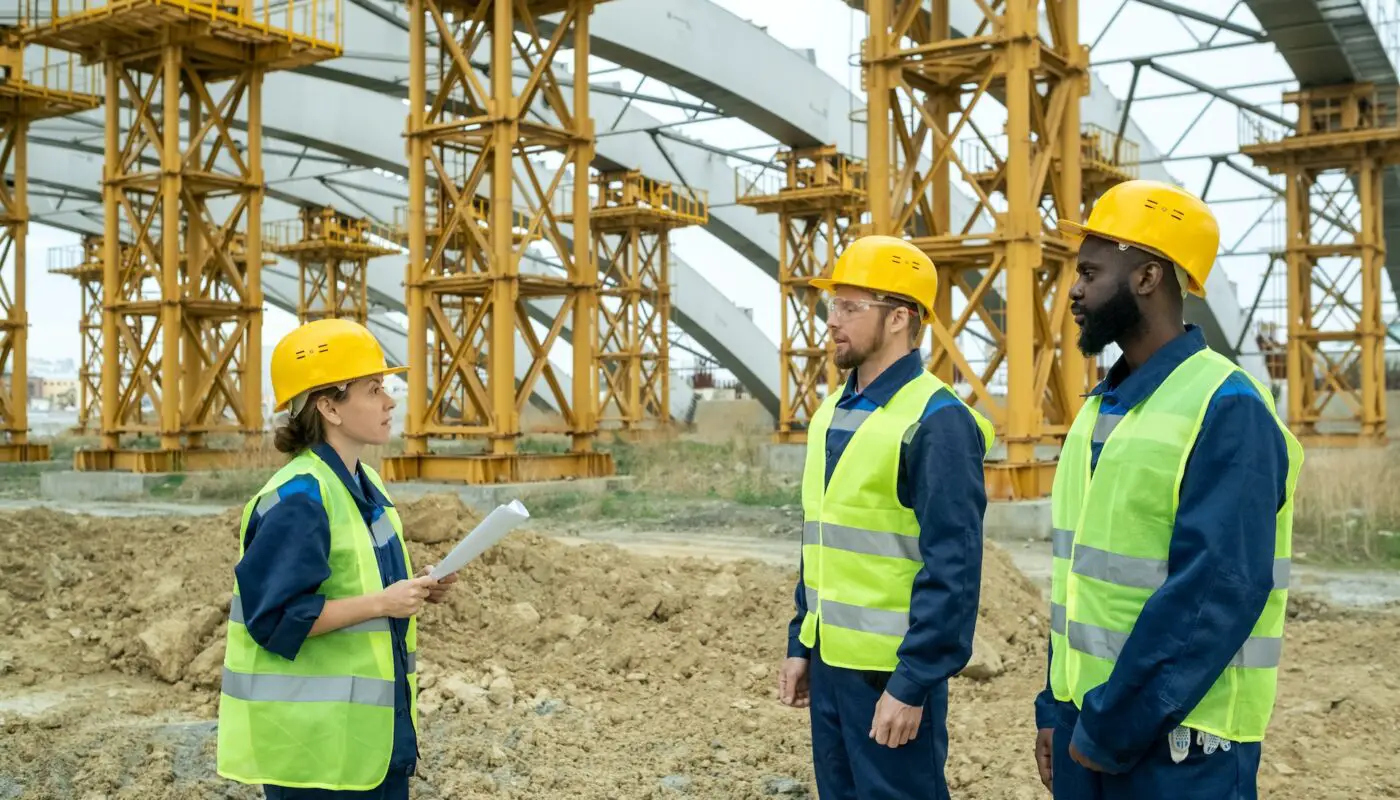Building a Safer Tomorrow: Fostering Safety Culture in Construction is an article that provides you with the knowledge and tools to make this vision a reality. By prioritizing safety practices, implementing effective training programs, promoting open communication among workers, and following practical tips for cultivating a safety culture, you can ensure that every worker goes home safely at the end of the day.
In this article, we will guide you through the steps needed to establish a strong safety culture on your construction site. You will learn how to identify potential hazards, train your workforce effectively, and encourage everyone on your team to take responsibility for their own safety as well as the safety of others.
With our detailed insights and proactive advice, you will have all the tools necessary to build a safer tomorrow in the construction industry. So let’s get started!
Prioritizing Safety Practices

To create a construction environment that values the well-being of workers, it is crucial to prioritize safety practices. Safety assessments and hazard identification should be at the forefront of your construction process. Conduct regular safety assessments to identify potential hazards and take necessary measures to minimize risks.
This includes inspecting equipment, machinery, and the overall work area for any possible dangers. Implement effective hazard identification strategies such as providing proper training to workers on recognizing and reporting hazards promptly.
Encourage open communication among your team members so that everyone feels comfortable sharing their concerns about safety. By actively prioritizing safety practices and consistently addressing potential hazards, you can foster a culture of safety in construction, ensuring the well-being of all workers involved in your projects.
Implementing Effective Training Programs
By implementing effective training programs, you can develop a stronger understanding of best practices to ensure a secure work environment. Incorporating technology into these training programs can greatly enhance their effectiveness.
For example, virtual reality simulations can provide realistic scenarios that allow workers to practice safety protocols in a controlled environment. This hands-on experience helps individuals internalize safety procedures and respond effectively in real-life situations. Additionally, using digital platforms for training allows for easy access to resources and updates, ensuring that everyone is up to date with the latest safety standards.
Evaluating the effectiveness of training programs is crucial in continuously improving safety culture. Regular assessments and feedback from participants enable organizations to identify areas for improvement and make necessary adjustments. This iterative process ensures that training remains relevant and impactful. Furthermore, collecting data on incidents and near misses can help identify patterns or gaps in knowledge that need to be addressed through targeted training initiatives.
Overall, implementing effective training programs is essential for fostering a strong safety culture in construction. By incorporating technology and regularly evaluating their effectiveness, you can ensure that individuals are equipped with the knowledge and skills needed to prioritize safety on the job site.
Promoting Open Communication Among Workers

Encouraging open communication among workers is crucial for creating a collaborative and supportive environment on the job site. By improving reporting and encouraging feedback, construction companies can foster a culture of safety where everyone feels comfortable speaking up about potential hazards or concerns.
Open communication allows workers to share their knowledge and experiences, helping to identify areas that can be improved and prevent accidents from happening in the first place. It also promotes transparency and trust between workers and management, as it shows that their opinions and observations are valued.
Implementing regular meetings or toolbox talks dedicated to discussing safety issues can provide a platform for workers to voice their thoughts, ask questions, and suggest improvements. Additionally, establishing anonymous reporting systems can further encourage open communication by allowing individuals to report potential hazards or near misses without fear of reprisal.
Overall, promoting open communication among workers is an essential component of building a safer tomorrow in the construction industry.
Practical Tips for Cultivating a Safety Culture
Establishing regular safety meetings and implementing anonymous reporting systems can help create a workplace where open communication thrives, fostering a collaborative and supportive environment.
Leadership commitment is crucial in cultivating a strong safety culture. When leaders prioritize safety and actively participate in safety meetings, it sends a powerful message to the entire team that safety is a top priority. This commitment encourages employees to engage in discussions about potential hazards or concerns without fear of retribution.
Employee engagement is another key aspect of building a safer tomorrow. Encouraging workers to actively participate in safety initiatives empowers them to take ownership of their own well-being as well as the well-being of their colleagues. Providing opportunities for employees to share their insights, ideas, and experiences can lead to valuable improvements in safety practices.
By prioritizing leadership commitment and promoting employee engagement, construction companies can foster a robust safety culture where everyone feels comfortable speaking up and working together towards a common goal: ensuring the well-being of every worker on the job site.
Frequently Asked Questions
What are some practical steps that can be taken to prioritize safety practices in the construction industry?
Implement safety protocols by conducting regular safety training, inspections, and equipping workers with proper personal protective equipment. Encourage accountability through clear communication channels, reporting systems, and rewarding safe practices.
How can construction companies effectively implement training programs that focus on safety?
To effectively implement safety training programs, construction companies should prioritize safety culture development. Start by assessing current practices, identifying gaps, and creating a comprehensive curriculum. Regularly evaluate training effectiveness to ensure continuous improvement in safety knowledge and practices.
What strategies can be used to promote open communication among workers in the construction industry?
To promote worker engagement in the construction industry, focus on building trust and accountability. Encourage open communication by fostering a culture of transparency, active listening, and collaboration. Provide regular opportunities for feedback and address concerns promptly to create a safe and productive work environment.
Are there any specific practical tips for cultivating a safety culture in construction that have been proven to be effective?
Practical tips for cultivating a safety culture in construction include: conducting regular safety training, implementing clear and accessible communication channels, encouraging worker involvement in safety initiatives, and consistently enforcing safety protocols. These strategies have proven to be effective in improving overall safety performance.
What are some common challenges that construction companies face when trying to foster a safety culture, and how can they be overcome?
To overcome challenges in promoting a safety culture, construction companies must address resistance to change, lack of employee engagement, and insufficient training. By implementing regular communication, providing resources and incentives, and leading by example, these obstacles can be overcome effectively.
Final Thoughts About Safety Culture in Construction

In conclusion, building a safer tomorrow in the construction industry requires prioritizing safety practices. This includes implementing effective training programs to ensure that workers are equipped with the necessary skills and knowledge to perform their tasks safely. Additionally, promoting open communication among workers is crucial. This allows for the sharing of safety concerns and the identification of potential hazards.
Following practical tips for cultivating a safety culture is also essential. This can involve creating safety committees or teams within the company to regularly assess and address safety issues. It also means encouraging workers to actively participate in safety initiatives and rewarding them for their contributions to a safer work environment.
By adopting these measures, construction companies can create an environment where safety is not just a priority but also ingrained in every aspect of their operations. With knowledge, attention to detail, and proactive actions towards fostering safety culture, we can ensure that future construction projects are carried out with the utmost concern for worker well-being and accident prevention.



